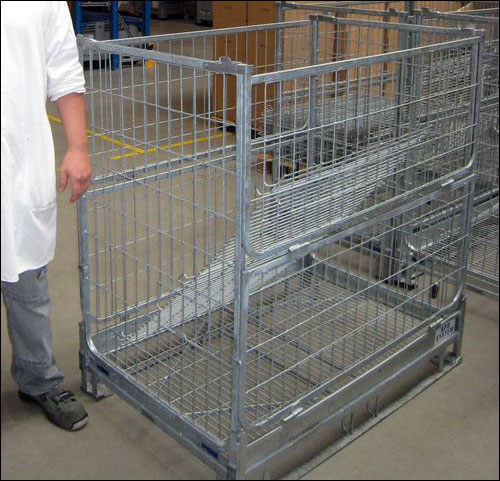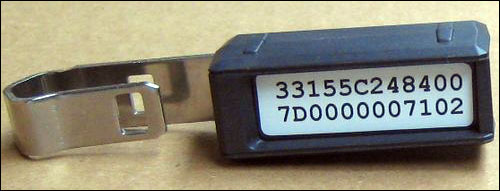Jul 11, 2012Færch Plast manufactures plastic trays that its customers can use to package food products, such as meat, cold food, snacks and premade meals sold at supermarkets. The company produces two billion such trays annually at three locations—at its headquarters in Holstebro, Denmark; at a facility in Liberec, in the Czech Republic; and, most recently, at a factory in Durham, England. The Danish and Czech sites pack the trays within reusable steel shipping containers, rather than in cardboard boxes or on wooden pallets, because metal can be cleaned and disinfected. Cardboard or wood, on the other hand, might absorb and transport bacteria, and thus cannot be used at meatpacking facilities or other food-processing locations. The U.K. facility ships its trays on pallets, instead of in the metal boxes.

When the Danish packaging supply company ships its products to customers from the Danish and Czech facilities, the steel containers (also known as cages) leave the firm's view until they are returned to its warehouse, where they are then cleaned. With tens of thousands of these steel boxes in transit, or at thousands of customer sites around the world, tracking the containers and ensuring their return can be a daunting endeavor. The company aims to make the tracking of these boxes easier, by employing a radio frequency identification system provided by Prosign RFID. Færch Plast installed the solution in October 2011, tagging 25,000 of its boxes, and is currently in the process of expanding its deployment to tens of thousands more.
In the event that the quantity of empty clean cages runs low, Færch Plast must transport empty boxes back to its facilities, and then clean them. The company's staff must often call customers to ask if they have any shipping containers on their premises, says Uffe Katborg Bjerre, Færch Plast's senior supply chain manager; if they do, the workers must then request that they be returned.
The goal of Færch Plast's management was to establish an automated solution that could track when and to whom boxes were loaded and shipped, as well as when they were returned. It also sought to reduce the need to purchase additional containers to replace those not located. The system combines RFID and bar-coding technologies, enabling the firm to track every loaded metal box.
Færch Plast applied Confidex Captura ultrahigh-frequency (UHF) Gen 2 passive RFID tags to each of 25,000 metal shipping containers at its two facilities, according to Michael Jensen, Prosign's director and CEO. When a cage is loaded with packaging products—approximately 7,000 to 8,000 plastic trays—it is then stretch-wrapped, and a bar-code label printed with an ID number is applied to the outside of the plastic film. At the Danish plant, an Impinj Speedway Revolution R420 interrogator, installed on the stretch-wrap machine, reads the RFID tag's ID number. At the Czech warehouse, workers employ a Psion Workabout Pro 3 RFID handheld reader to scan the bar code and then interrogate the tag's unique ID. At either site, the box's bar-code and tag ID numbers are recorded in the ProSign software, where the two numbers are linked together. The bar-code number is also linked to the specific type of product loaded in the metal box, in Færch Plast's own management software. The loaded cage is then placed into storage, until required to fill a customer's order.
When an order arrives for that product, the warehouse workers retrieve the metal container and scan its bar code, indicating the kind of product being shipped to that customer. Færch Plast's software stores a record of the box's actual shipping date and time, based on the bar code, and that information is forwarded to the ProSign software. This updates the container's status as shipped at that particular time and date.
Prosign software provides management with a list indicating which containers are at which locations, along with how long they have remained at those sites. In that way, Bjerre says, the company can issue notifications to customers providing very specific information. In the past, he explains, Færch Plast's workers needed to ask a customer whether it had any of the boxes on its premises. Currently, he notes, the staff can simply indicate, "You have the following number of boxes, and these are their ID numbers."
After applying tags to 25,000 metal containers, Bjerre says, Færch Plast quickly realized that it had many more boxes than that. The company has now ordered additional tags, and intends to tag all of its containers by October 2012. Once the tags have all been applied, he says, the firm will have a better idea of the value that the system provides. However, he notes, the technology has already proven effective at tracking when boxes were shipped to particular sites, and thus where they are located if they fail to return.
In the meantime, Bjerre reports, Færch Plast has been growing at an annual rate of 5 to 8 percent. Despite that rate of growth, he expects that his company will not need to purchase additional metal containers for several years, thanks to the RFID system. What's more, because the solution has decreased the likelihood of the firm experiencing shortages of empty boxes, he anticipates improvements in dispatch and warehouse workflow.



